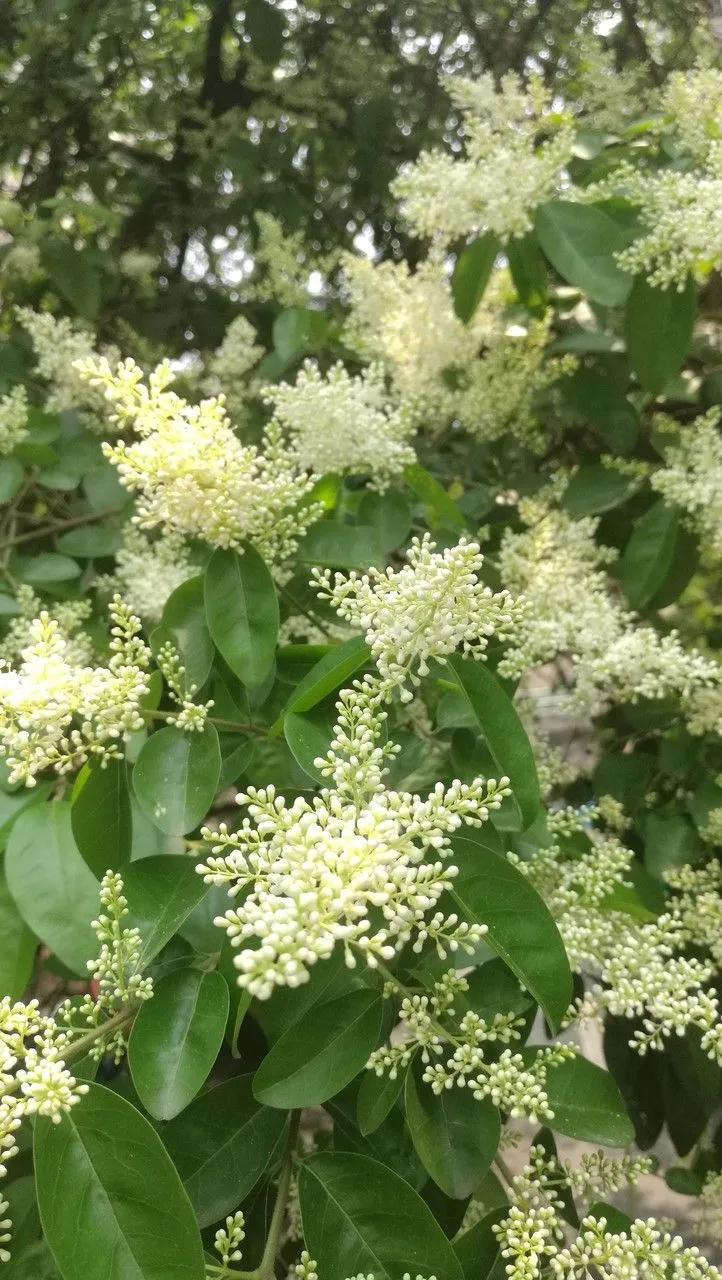
Author: Carrière
Bibliography: Rev. Hort. (Paris) 41: 377 (1869)
Year: 1869
Status: accepted
Rank: species
Genus: Ligustrum
Vegetable: False
Observations: Tibet (Chayu Xian) to C. & S. China, S. Korea
The Waxyleaf privet, scientifically known as Ligustrum quihoui, is a versatile and resilient ornamental shrub that belongs to the Oleaceae family. First described by Carrière in 1869 in “Revue Horticole” (Paris), this plant has since garnered recognition for its distinctive characteristics and adaptability.
Originating from a broad geographical range, the Waxyleaf privet is indigenous to regions extending from Chayu Xian in Tibet through Central and Southern China and into South Korea. This demonstrates the plant’s remarkable ability to thrive in diverse environmental conditions, making it an excellent choice for a variety of landscaping uses.
The Waxyleaf privet is particularly well-known for its lustrous, waxy foliage that provides a visually appealing, glossy finish. These leaves not only contribute to the plant’s aesthetic qualities but also serve a functional purpose by reducing water loss, aiding its survival in harsher climates. This characteristic waxiness is likely a key adaptation that has allowed the species to spread across such a varied range of habitats.
Aside from its attractive foliage, the Waxyleaf privet produces small, white flowers that bloom in clusters, adding to its ornamental value. These flowers typically attract a range of pollinators, which can enhance biodiversity in garden settings. As the flowers fade, they are replaced by small black berries, adding another layer of seasonal interest and providing food for wildlife.
The plant’s robust nature makes it a favored choice for hedges and screens, as it can withstand regular pruning and shaping without adverse effects. This makes it particularly useful for those seeking to create structured garden designs or natural barriers. Its fast growth rate and sturdy constitution also mean that it can quickly establish itself in new environments, providing quick cover and aesthetic appeal.
In summary, Ligustrum quihoui, or Waxyleaf privet, is a highly adaptable and visually appealing shrub well-suited for a variety of landscaping purposes. Its glossy foliage, attractive flowers, and resilient nature make it a valuable addition to gardens and green spaces, capable of thriving across a wide range of environmental conditions from Tibet to South Korea.
Eng: waxyleaf privet, waxy-leaf-privet
En: Waxyleaf privet, Waxy-leaf-privet
Hy: Կիպրոս Քվիհոյի
Zh: 小叶女贞
Zh-tw: 小葉女貞
Zh-hant: 小葉女貞
Taken May 1, 2017 by Dieter Albrecht (cc-by-sa)
Taken May 1, 2017 by Dieter Albrecht (cc-by-sa)
Taken Jun 11, 2021 by Neue Pflanzenwelt (cc-by-sa)
Taken May 1, 2017 by Dieter Albrecht (cc-by-sa)
© copyright of the Board of Trustees of the Royal Botanic Gardens, Kew.
Growth habit>: Shrub
Family: Myrtaceae Author: (F.Muell.) K.D.Hill & L.A.S.Johnson Bibliography: Telopea 6: 402 (1995) Year: 1995 Status:…
Family: Rubiaceae Author: Pierre ex A.Froehner Bibliography: Notizbl. Bot. Gart. Berlin-Dahlem 1: 237 (1897) Year:…
Family: Sapindaceae Author: Koidz. Bibliography: J. Coll. Sci. Imp. Univ. Tokyo 32(1): 38 (1911) Year:…
Family: Asteraceae Author: A.Gray Bibliography: Pacif. Railr. Rep.: 107 (1857) Year: 1857 Status: accepted Rank:…
Family: Fabaceae Author: Medik. Bibliography: Vorles. Churpfälz. Phys.-Ökon. Ges. 2: 398 (1787) Year: 1787 Status:…
Family: Aspleniaceae Author: (Cav.) Alston Bibliography: Bull. Misc. Inform. Kew 1932: 309 (1932) Year: 1932…